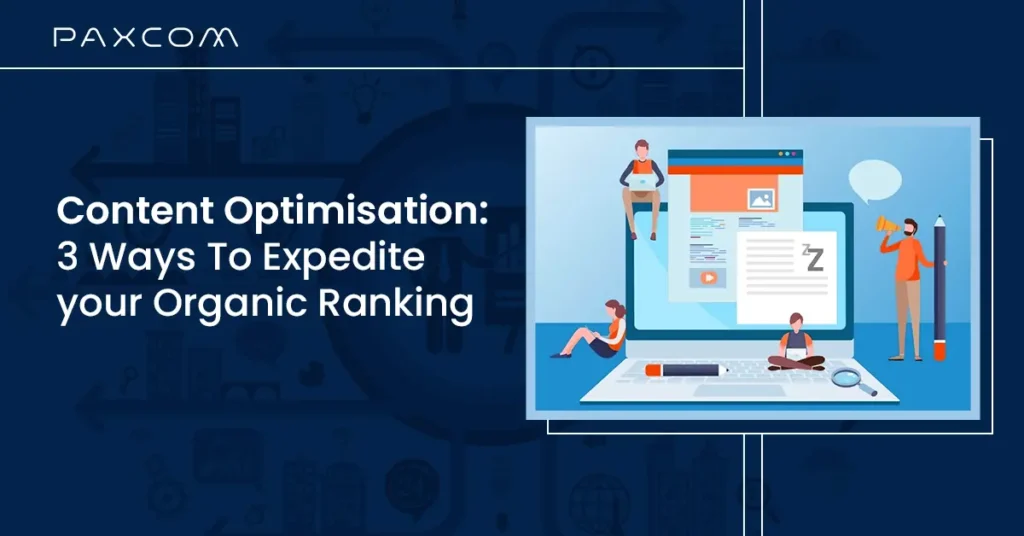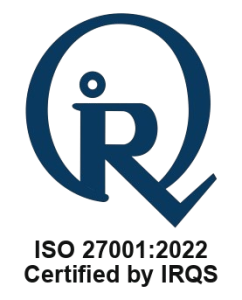Imagine doing everything you can to expedite your product’s performance but still not getting the desired results. eCommerce has observed substantial growth over the past few years and will continue to do so in the near future. With a plethora of opportunities and competition, it is important for a brand to step up its game to achieve the expected targets and goals. Multiple eCommerce platforms are available both globally and locally, so ensuring your brand doesn’t get lost in the search engines is crucial. By following best practices and streamlining content management, you can increase your organic search ranking across platforms.
Table of Contents
What is Content Optimisation?
In simple terms, content optimisation involves updating information and adding relevant content as needed. From using trending keywords to ensuring your website’s UI and UX are user-friendly for both desktop and mobile, content optimisation helps you tap into a wider audience and improve engagement and conversion rates. By implementing strategies such as revamping websites, optimising product pages, enhancing brand stores across platforms, updating FAQs, and refreshing images, you can enhance the visibility and appeal of your website in the digital landscape.
The blog delves into key, compelling strategies for content optimisation to help you achieve your desired results. But before we explore those strategies, let’s consider how meeting consumer expectations and retaining customers contribute to long-term success.
A positive customer experience promotes satisfaction and contributes to organic ranking results. Factors like website loading speed, high-quality and relevant content, easy navigation, surveys and feedback forms, readability, relevant FAQs, round-the-clock chat support, A/B testing, user-generated content, SEO, and analytics all play a role in creating a seamless experience. This, in turn, encourages user satisfaction and fosters customer retention over time.
Why is customer retention important for brands to rank highly in search results?
The average time a customer spends on any platform while scrolling is 15 seconds; it’s quite a make-or-break situation. As we have faster internet access, attention spans are significantly dropping to 8-12 seconds when consuming content. These statistics themselves show how important ranking is for brands on eCommerce platforms.
Creating an effective strategy that includes analysing customer behaviour and coming up with relevant ideas can be the solution for ranking at the top in customer searches. When you increase customer satisfaction, it drives traffic to your product page, which improves your search visibility and helps you climb the ladder of product search rankings. Now we know why it’s important to retain customers, but the question arises: how do we do it?
- Optimising hero images, product titles, mobile-optimised layouts, and taglines lets you draw in customers’ attention. Product images are the first things customers see, presenting a potential opportunity for brands to showcase their products. In fact, 75% of consumers rely on the product hero image, giving brands a chance to stand out from their competitors.
- Keyword research plays a key role. When a customer searches for a product using a specific keyword, it indicates that they are ready to buy. Ensuring that the keyword and associated product are correctly aligned not only satisfies them but also increases the brand’s search result ranking.
- Keyword optimisation is essential when it comes to ranking. If a customer searches with a specific keyword and a product does not contain that keyword, it will not appear in the search results.
- Consider keyword bidding, which includes four types of terms: generic, related, brand, and competitor. Thorough research and analysis allow you to bid on relevant terms while keeping the customer in mind. This approach helps your brand move up in the rankings by aligning your product with the right keywords.
How does content optimisation help with brand visibility and customer retention?
To establish a presence on eCommerce platforms, brands must have well-optimised content to attract customers.
Content optimisation is the process of improving your content to help search engine algorithms rank your product higher. When you focus on optimising the content with the help of SEO and relevant keywords, you receive more views, which leads to higher search rankings, conversion rates, and sales.
As we move forward, we have organised the strategies into three clusters, followed by basic cataloguing, making it easy to grasp and work on the levels as per the requirements.
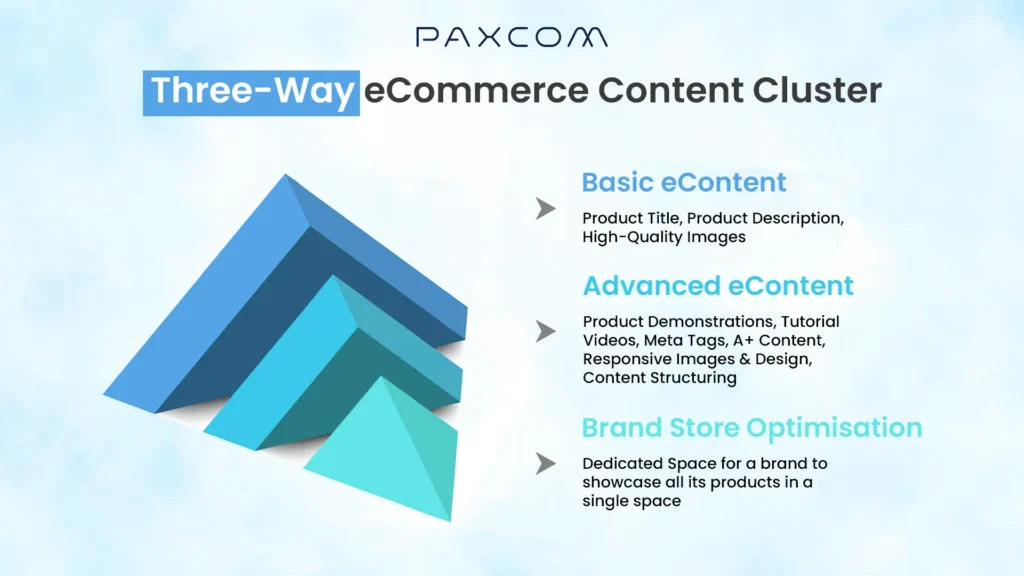
1. Basic eCommerce Content
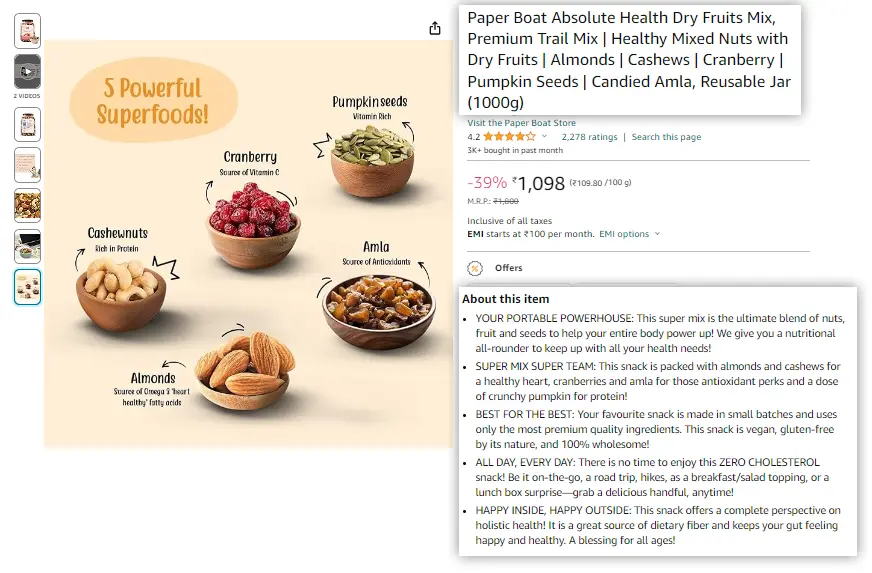
An example of Basic eCommerce Content. Source: Amazon India
The first cluster includes the basic information related to the product, such as titles, product features, descriptions, and a head image incorporated with relevant keywords.
- Integrate the “Product Title” with highest searched keywords. As the product title plays an essential role, incorporating the right keywords becomes necessary. Include product USPs to gain traction and scale search visibility in an organic way.
- “Product Descriptions” and “Bullet Points” add both volume and value to the product, giving more clarity on the product, and the more content the page has with relevant keywords, the easier it is for customers to search for your product, resulting in a higher product ranking.
- “High Quality Images” play a prominent role in elevating the product’s presence and quality across the platform and search consoles. Images gain the most consumer traction, and if the look-and-feel is inadequate, the conversion rate gets affected a lot. It is advisable to use a maximum of 7 images highlighting the packshot, features, and benefits of the product.
2. Advanced eCommerce content
This cluster offers a deeper understanding of the brand’s product to the audience and helps them make buying decisions.
- “Product Demonstrations and Tutorials” help the customers with the know-how of the product. For example, if a customer wants to buy a laptop bag (say, 16 inches), a demonstration video of the product depicts what can be stored inside the bag along with the suitable laptop dimension. The video will help the customer better understand the product in a more detailed manner, which will also result in enhanced engagement metrics.

Product Demonstration of Laptop Sleeve
- Alt Texts and Descriptions contribute to overall SEO and ranking and help search engines understand the image content better. These factors followed by “Responsive Images” that elevate the user experience on every device, especially on mobile devices, making it one of the most looked after ranking factor and strategy
- “Keyword Integration” in titles, bullet points, and descriptions improves search engine visibility, while optimising “Meta Tags and Meta Descriptions” adds to the click-through rates from SERPs, and “Content Structuring” improves the readability of the content, making it easily scannable and searchable.
A+ Content Optimisation
- A+ content lures customers with its creative layout of infographics, images, videos, unique product descriptions, and banner-like design. It has been proven that with the use of A+ content, the conversion rate increases by 10%. It makes the shopping experience for customers’ an appealing one, leads to more product discovery and drives high traffic to the page
- When a customer browses a product page, A+, or enhanced content, helps them understand the product and make an informed decision.
- Leverage “Glance Views” shows the number of times a Product Detail Page is viewed This metric can help you make better merchandising decisions. It assists with inventory management as well as merchandising strategy optimisation. By understanding where your customers spend their time, you can modify your merchandising strategies appropriately.
Image Optimisation : An Overview

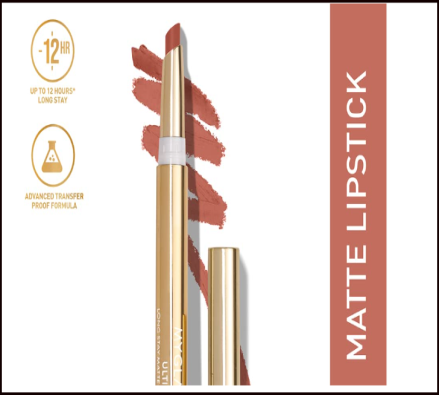
Source: Amazon India
When a customer lands on the product page, images are the first thing that attracts them to the product; optimising them becomes an integral part of conversion and engagement. A hero image is the first thing they see when they land on a brand’s product page, and it is the most effective way to lure customers. The main purpose of this image is to help people visualise the product. Using high-quality and mobile-ready images will intrigue the customers and influence their buying decisions; this will ultimately result in high traffic to your page and increase the brand’s search results visibility.
- Lifestyle images help in building a connection. These kinds of images are usually used to improve the aesthetics and showcase the consumer’s view of the product. A customer cannot touch or feel the product, but this helps to engage customers visually.
- Adding close-up images/ pack shots of product packaging is mandatory for brands in terms of search ranking. It offers information on the product’s ingredients and its benefits because even if the customer does not make a purchase, they are likely to visit the product page again, which increases visibility and improves the chances of ranking at the top.
- Brands can use additional images to offer customers a 360-degree view of the product. Showcase the attributes and USP of the product. A visual demonstration of the unique feature of the product will draw attention and improve.

A 360- degree view of the product, Source: Amazon
- A product-in-use image will provide more clarity on the product, ultimately leading to positive customer reviews and feedback.
3. Brand Store Optimisation : A Digital Catalogue
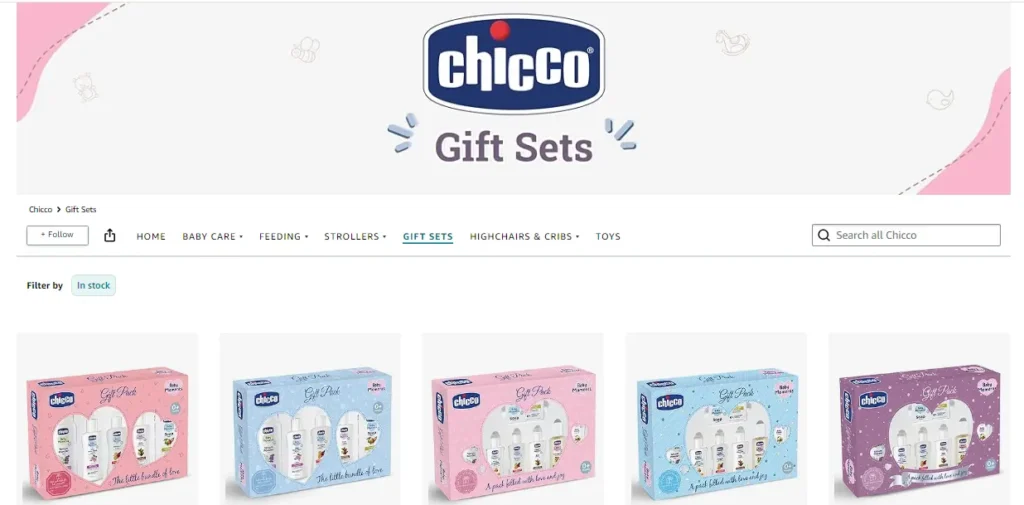
Chicco Brand Store, Source: Amazon India
Brand Stores are often viewed as an umbrella for the brand to showcase all its products at one place. It improves the user experience, drives visibility on the search engine, and leads to more organic traffic and conversions. Here are a few strategies on how to optimise and enhance the brand store to drive your business to new heights.
- Create a brand store that allows customers to see the product shelf to imitate the experience of accessing all the products in a single space. Ensure the store is easy to navigate, which will help consumers find the products easily. Using responsive designs creates a win-win situation as it makes the brand store easily accessible on mobile devices as well.
- A brand store allows customers to see the journey of the brand, the platforms are flooded with products, and it offers a chance to stand out from the competing brands. They can link sponsored ads to the brand store to boost conversion. Including banners and creative templates lets you build a connection with customers.
- Optimise the brand store by making it visually appealing with the help of images and text infusions to generate traffic.
- Optimising the title and description for each module creates a distinct appeal, generates customer interest, and aids in increasing search visibility.
- By focusing on these areas, brand store optimisation can significantly enhance the user experience, improve search engine visibility, and ultimately boost organic traffic and conversions.
How can Paxcom help you increase your search ranking with its content optimisation strategies?
Our in-house Kinator software includes interactive dashboards that offer reports on a content scorecard, which helps improve discoverability and buyability; search visibility, which is based on the search results when a generic or branded keyword is searched; and category visibility reports to enable decision making for optimising search results on the category pages.
When a customer searches for the generic keyword “biscuit,” it is very important for every biscuit brand to come in the top results. We help brands analyse their current search ranks and improvise to come in the top search results.
It is vital for every brand to use relevant keywords in their content to improve performance, as it will support the algorithm of the results. We even support brands in keyword bidding and campaign management, such as display ads and sponsored product ads, to improve overall visibility in the category/ search results, and channel.
We have a team of content experts who conduct in-depth content analysis on the existing content, improvise existing content based on category and competition analysis, and work on developing enriched A+ content to appeal to customers and create interesting and attractive products and brand store pages. They follow the guidelines to make recommendations for optimisation of the products to help increase search visibility. Paxcom’s content experts, creative designers, offer your brand qualitative content creation, and layout to drive traffic and improve your search rankings.
Our content experts have worked with many brands and optimised their content by revamping their images, titles, descriptions, and enhanced A+ content. Brands have observed significant growth of 350% and above in conversion rates.
Please write to us at info@paxcom.net to learn about our various offerings, which can help you improve your brand’s search ranking on e-commerce platforms and lead to significant growth in conversion rates.
